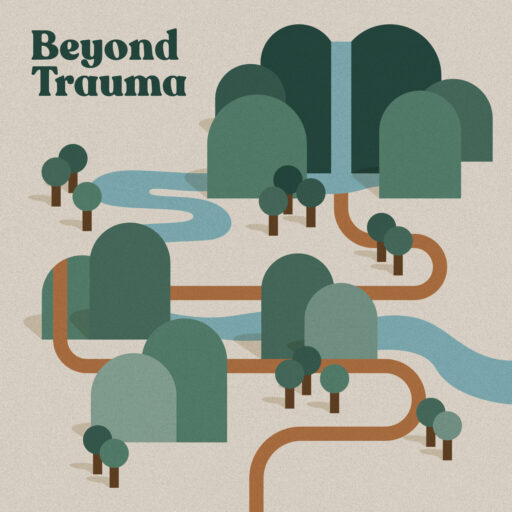Episode 21: Trauma and Neurodevelopment

Today, Bridger and Mel discuss how trauma affects the neurodevelopment of the brain, bottom to top.
Join our Beyond Trauma Patreon!
Trainings are coming for 2022! Sign up for your Trauma Informed Care Training!
What is trauma?
- We understand trauma to be anything that intrudes on our consciousness that is too much too soon, too much for too long or too little for too long in the absence of secure attunement.
- Check out episode 1 for more explanation!
- The presence of secure attunement allows our bodies to experience situations that may be traumatic, but with adaptation and even growth.
- When we don’t have a consistent and safe co-regulatory figure, threatening experiences can become very difficult for us to process.
From the Beginning
- The human brain develops back to front.
- In a newborn, some parts of the brain that are already fully developed. There are also other parts of the brain still need maturation of neurodevelopment.
- Some parts of the brain are not fully developed as an infant and need experiences to shape their brain. Our brain develops in an experience-based and state-based way.
- The frontal parts of the brain is not fully developed as infants and young children.
- Infant humans are the most dependent and needy mammals.
- The type of experiences we have shape the neurodevelopment of the brain.
- This is not happening verbally nor explicitly.
- Remember, experience shapes our personality, identity and sense of self and others.
The Foundation of the Brain
- House of cards example
- If we had early trauma, later stressors become more impactful.
- There are certain sensitive periods of brain development that experiences can be more impactful to its growth.
- Our body responds and adapts to trauma.
The Impact of Trauma
- As we get older, we don’t always think about how our minds and bodies have adapted from our past traumas.
- Trauma changes our future experiences, concepts of self and our relationships with others.
- Trauma also affects our future attachment styles, which is how we strategize getting our needs met.
- Understand that the shaping of the brain over time in relationships is the foundational understanding of the human experience.
3 Parts of the Brain
- Let’s first talk about the bottom part of the brain. The bottom part of the brain is the oldest part of the brain. It functions solely for our survival by getting our most basic needs met.
- Emotional part of the brain: Our emotional brain responds when our threat detection becomes activated. This part of the brain determines if we need to fight/flight or shutdown. Threat becomes our reality.
- Thinking part of the brain: Attempts to make sense of ourselves and our reactions to situations.
The Intention of Therapy
- First, the repetition of disconfirming experiences provides moments of safety for our nervous system to risk trying a new, more efficient, strategy.
- Secondly, we see change with a disconfirming experience in spirituality, romantic relationships, friendships and even with the self. This makes healing possible.
- Also, good therapy creates change in deep areas of the brain that are concerned with safety, survival and connection.
- Lastly, remember that there’s always hope.



